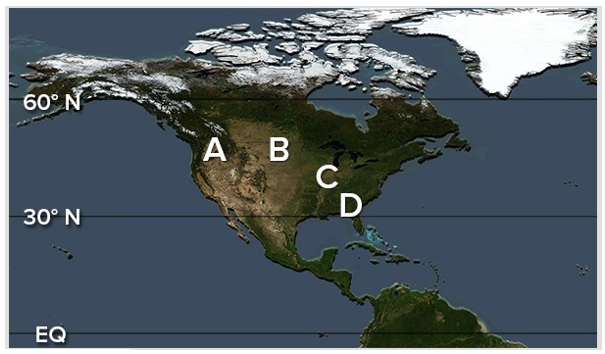Why is it common to use two different concepts—nation and state—to describe political entities?
What will be an ideal response?
By convention, a nation refers to a group of people who share a common cultural identity be it
ethnicity or ideology; nations may or may not be associated with a particular territorial state. A
state is a recognized political entity that exhibits sovereignty—internal control of its own
governance, with legally defined territorial boundaries. Many states are associated with a single,
or dominant, nationality: a nation-state. Many nationalities that do not currently have their own
state aspire to achieve one.
You might also like to view...
Which of the following locations experiences the greatest frequency of freezing rain due to the typical storm track of midlatitude cyclones?

A) A
B) B
C) C
D) D
Stationary fronts are distinctive because ____
Fill in the blank(s) with the appropriate word(s)
Which of the following is NOT true?
A) Unaccompanied minors arriving from Central America to the United States are pushed because of gang-related activity. B) Movement between developing countries includes higher numbers of elderly migrants than between developed countries. C) Female immigrants include the group reuniting with husbands. D) Increased Mexican female migrations reflects the changing role of women in Mexico. E) Most of the immigrants to the United States are females between the ages of 40 to 65.
A thunderstorm cloud is known as a(n) ____________________
Fill in the blank(s) with correct word